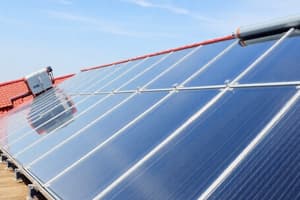Podcast
Questions and Answers
What is the primary factor that affects how much sunlight an area receives?
What is the primary factor that affects how much sunlight an area receives?
- Latitude (correct)
- Altitude
- Wind direction
- Humidity
The Equator is the point on Earth that receives the least amount of sunlight.
The Equator is the point on Earth that receives the least amount of sunlight.
False (B)
What is the term used for the transfer of thermal energy between materials by particle collision?
What is the term used for the transfer of thermal energy between materials by particle collision?
conduction
The phenomenon where water and air moves from left to right in the Southern Hemisphere is known as the __________ effect.
The phenomenon where water and air moves from left to right in the Southern Hemisphere is known as the __________ effect.
Match the following terms with their definitions:
Match the following terms with their definitions:
Flashcards are hidden until you start studying
Study Notes
Energy Transfer and Climate
- Sun's energy arrives at Earth as electromagnetic waves known as radiation.
- The amount of sunlight received by an area depends on its latitude relative to the Equator.
- The Equator, as the largest latitude line, receives the highest levels of solar energy.
Tropics and Solar Energy
- The Tropics receive more sunlight due to the sharp angle at which they are positioned towards the Sun.
Specific Heat
- Specific Heat describes the energy required to increase the temperature of a substance.
- Water has a high specific heat, enabling it to absorb large quantities of thermal energy without a significant temperature rise.
Thermal Energy Transfer
- Conduction refers to thermal energy transfer through the collision of particles in materials.
Coriolis Effect
- In the Northern Hemisphere, water and air currents move from right to left.
- In the Southern Hemisphere, they move from left to right, known as the Coriolis Effect.
General Concepts
- Air masses are large bodies of air with uniform temperature and humidity characteristics.
- Climate is influenced by the long-term patterns of weather conditions in an area.
- A vacuum is a space devoid of matter, affecting how energy is transferred.
Studying That Suits You
Use AI to generate personalized quizzes and flashcards to suit your learning preferences.




